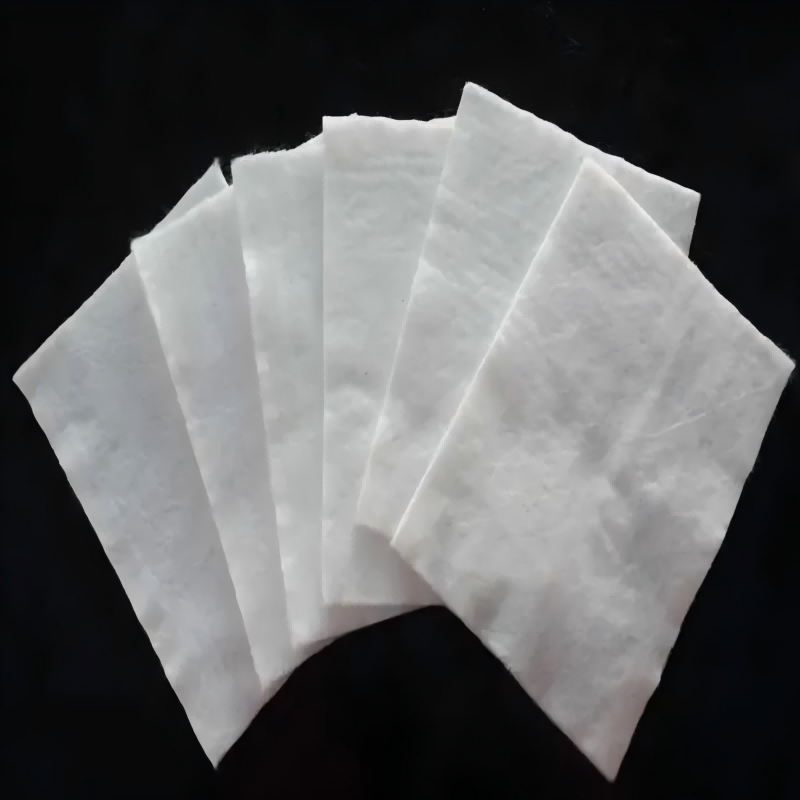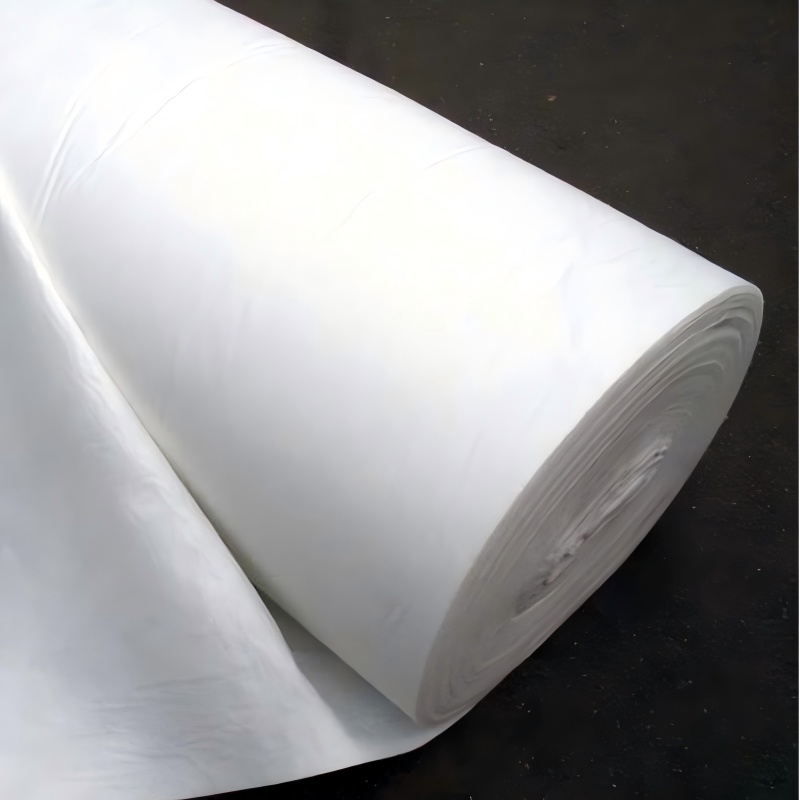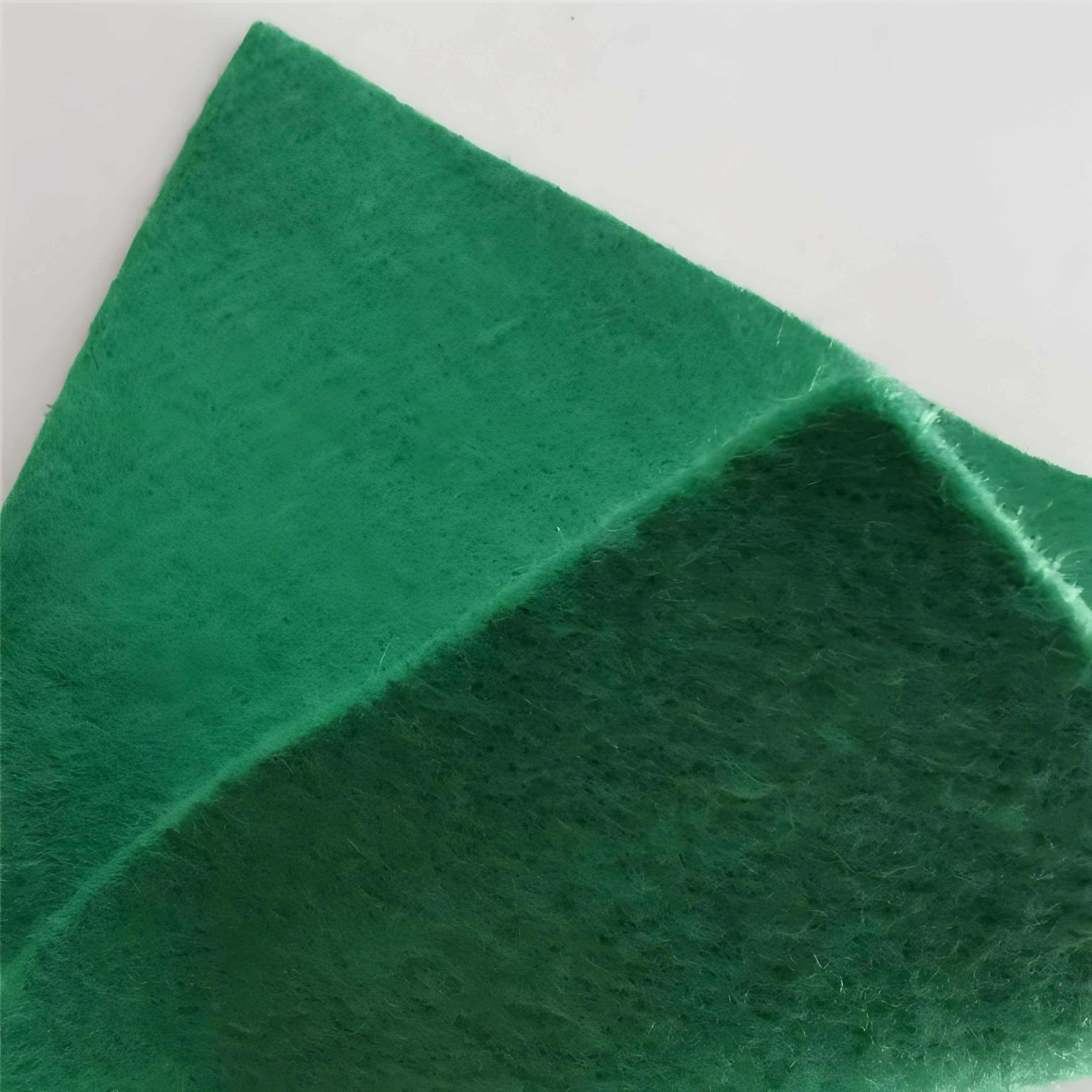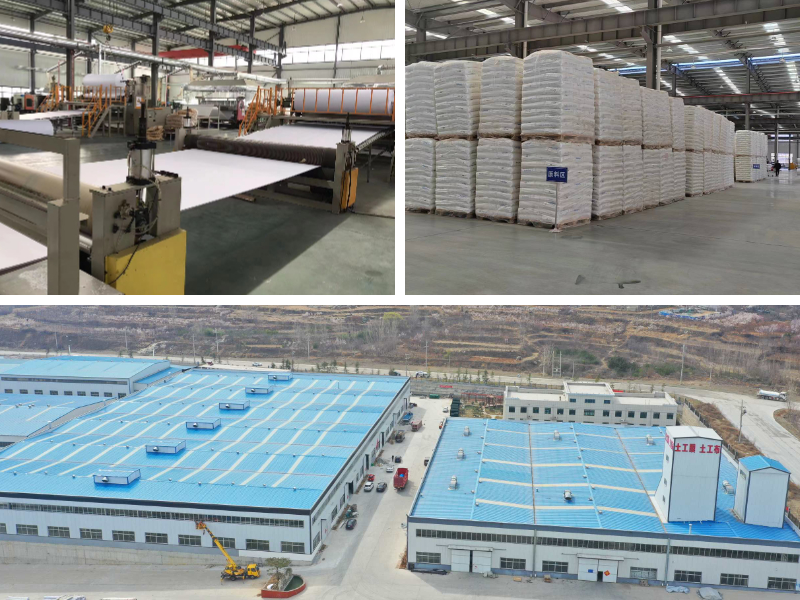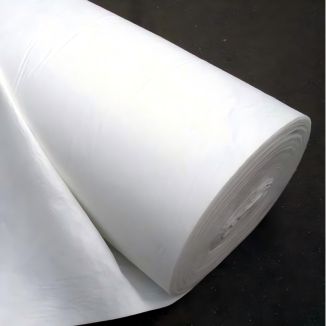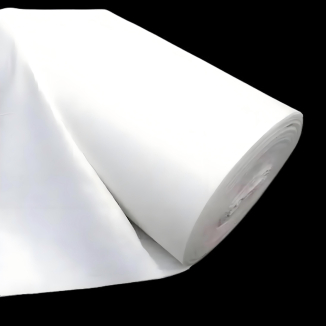Geotextile in Retaining Wall
1. High strength and durability: Made of synthetic fibers, it has excellent tensile, tear, puncture, and creep resistance, and can maintain stability in harsh soil and groundwater environments for a long time.
2. Permeability and Filtration: With a large number of pores, it allows water to pass through smoothly, while effectively preventing excessive loss of soil particles, preventing piping, and maintaining the stability of soil structure.
3. Reinforcement and strengthening effect: It has high tensile strength, can disperse loads, improve the shear strength of soil, enhance the stability of soft soil foundation, and is commonly used to reinforce slopes, embankments, etc.
4. Protective function: As a buffer layer, it can reduce the damage of external stress to the waterproof layer or other sensitive materials.
Product Introduction:
Geotextile in Retaining Wall is a new type of geotechnical material, which is made of synthetic fibers (such as polypropylene, polyester, polyethylene, etc.) or natural fibers as raw materials, and is a permeable geosynthetic material made through processes such as needle punching, weaving, thermal bonding, and chemical bonding. It is not a traditional "fabric", but a functional material designed specifically to solve problems such as filtration, drainage, isolation, reinforcement, and protection in geotechnical engineering. It widely replaces traditional materials such as sand and gravel, promoting the lightweight, environmentally friendly, and efficient construction of engineering projects.
From the perspective of engineering properties, the core definition of geotextiles can be broken down into three key dimensions:
Raw material properties: Mainly composed of polymer synthetic fibers (accounting for over 90%, such as polypropylene PP and polyester PET), with a small amount of natural fibers (such as flax and coconut shell fibers, mostly used in environmentally friendly degradation scenarios). The fibers have high strength and strong weather resistance, and can adapt to complex engineering environments such as soil, water bodies, and high and low temperatures.
Process attributes: Materials are endowed with a "function oriented" structure through specific processes - needle punching process forms a fluffy porous structure (focusing on filtration and drainage), weaving process forms a tight mesh structure (focusing on reinforcement and isolation), and thermal/chemical bonding process forms a homogeneous film like structure (focusing on anti-seepage assistance).
Engineering attribute: The core function is "interaction with soil, stone, and water", which solves pain points such as "soil water mixing", "structural instability", and "erosion damage" in engineering through characteristics such as permeability, tensile strength, and corrosion resistance. It belongs to the core category of geosynthetic materials (parallel to geomembranes, geogrids, etc.).
Key Features
The characteristics of geotextiles are strongly bound to their functions. Different types of geotextiles (such as needle punched non-woven fabrics, woven fabrics, and composite fabrics) have slight differences in their characteristics, but the core common features can be summarized into the following five points:
1. Excellent water permeability: The porosity of non-woven geotextiles can reach 70% -90%, allowing water to freely pass through while intercepting soil particles (the filtration accuracy can be controlled by fiber fineness), achieving "water passing through soil but not exceeding", avoiding soil loss or piping.
2. High strength and deformation resistance: The fracture strength of synthetic fibers is 3-5 times that of cotton. Geotextiles can maintain stable tensile properties under stress (such as soil settlement and vehicle loads), and the elongation can be controlled between 10% -30% (lower for woven fabrics and slightly higher for non-woven fabrics), effectively restraining soil deformation.
3. Weather resistance and corrosion resistance: Polypropylene and polyester fibers can resist ultraviolet rays (with a strength retention rate of ≥ 80% after 5 years of outdoor exposure to UV resistant agents), acid and alkali (such as saline alkali soil in farmland and industrial wastewater environment), and microbial (not decomposed by bacteria and fungi) erosion, making them suitable for long-term outdoor projects.
4. Good isolation: It can separate soil, sand and gravel, and roadbed materials of different particle sizes (such as isolating roadbed soil from gravel layers), avoiding material mixing that may cause a decrease in structural strength, and reducing infiltration pollution between different materials (such as preventing roadbed soil from contaminating groundwater sources).
5. Flexibility and adaptability: Geotextile has a soft texture and can fit irregular terrain (such as slopes and corners of foundation pits). It can even maintain flexibility in low temperature (-30 ℃) or high temperature (70 ℃) environments without cracking due to temperature differences, making it suitable for complex terrain engineering.
Product Parameters:
project | metric | ||||||||||
Nominal strength/(kN/m) | |||||||||||
6 | 9 | 12 | 18 | 24 | 30 | 36 | 48 | 54 | |||
1 | Longitudinal and transverse tensile strength / (kN/m) ≥ | 6 | 9 | 12 | 18 | 24 | 30 | 36 | 48 | 54 | |
2 | Maximum elongation at maximum load in longitudinal and transverse directions/% | 30~80 | |||||||||
3 | CBR top penetration strength /kN ≥ | 0.9 | 1.6 | 1.9 | 2.9 | 3.9 | 5.3 | 6.4 | 7.9 | 8.5 | |
4 | Longitudinal and transverse tearing strength /kN | 0.15 | 0.22 | 0.29 | 0.43 | 0.57 | 0.71 | 0.83 | 1.1 | 1.25 | |
5 | Equivalent aperture O.90(O95)/mm | 0.05~0.30 | |||||||||
6 | Vertical permeability coefficient/(cm/s) | K× (10-¹~10-), where K=1.0~9.9 | |||||||||
7 | Width deviation rate /% ≥ | -0.5 | |||||||||
8 | Unit area mass deviation rate /% ≥ | -5 | |||||||||
9 | Thickness deviation rate /% ≥ | -10 | |||||||||
10 | Thickness coefficient of variation (CV)/% ≤ | 10 | |||||||||
11 | Dynamic perforation | Puncture hole diameter/mm ≤ | 37 | 33 | 27 | 20 | 17 | 14 | 11 | 9 | 7 |
12 | Longitudinal and transverse fracture strength (grab method)/kN ≥ | 0.3 | 0.5 | 0.7 | 1.1 | 1.4 | 1.9 | 2.4 | 3 | 3.5 | |
13 | Ultraviolet resistance (Xenon arc lamp method) | Longitudinal and transverse strength retention rate% ≥ | 70 | ||||||||
14 | Ultraviolet resistance (fluorescence UV lamp method) | Longitudinal and transverse strength retention rate% ≥ | 80 | ||||||||
Product Applications:
1. Water conservancy engineering: core solution for "filtration, drainage, and protection"
Dam anti filter layer: a needle punched non-woven geotextile is laid on the upstream slope of the dam to intercept soil particles and prevent piping (water flow carrying away the soil of the dam body and causing dam collapse);
River slope protection: After laying geotextile on the river slope, cover it with pebbles/concrete blocks to reduce the erosion of the slope by water flow;
Anti seepage assistance: Composite with geotextile (geotextile+geotextile=composite geotextile) to enhance the puncture resistance of the geotextile (avoiding sharp soil particles from puncturing the geotextile).
2. Highway and railway engineering: core solution for "isolation, reinforcement, and stable roadbed"
Roadbed isolation: Lay geotextile between the roadbed fill and gravel base to separate different materials and prevent gravel from being embedded in the roadbed soil and causing roadbed settlement;
Reinforcement of soft soil foundation: laying woven geotextile in layers in soft soil subgrade (such as silty soil), sharing the subgrade load through the tensile strength of geotextile, and reducing settlement (such as in soft foundation sections of highways, the settlement can be controlled within 5cm);
Tunnel drainage: Geotextile is laid on the outside of the tunnel lining to guide water seepage into the drainage blind pipe, avoiding the impact of lining water seepage on the tunnel structure.
3. Municipal engineering: core solutions for "environmental protection, convenience, and lightweight"
Underground pipe gallery protection: Wrap geotextile around the outside of the pipe gallery to prevent soil particles from blocking the waterproof layer of the pipe gallery, while reducing the pressure of soil settlement on the pipe gallery;
Landfill site: Composite geotextile (non-woven fabric+woven fabric) is laid at the bottom of the landfill site as a protective layer for the secondary anti-seepage layer, preventing sharp objects from puncturing the anti-seepage membrane and filtering impurities in the leachate;
Urban Greenway: Lay geotextile in the roadbed of the greenway to isolate soil and sand, avoiding potholes caused by rainwater erosion.
4. Construction and foundation pit engineering: core solutions for "drainage and landslide prevention"
Excavation drainage: Lay geotextile in the drainage blind ditch of the excavation slope, filter soil particles, prevent blind ditch blockage, accelerate excavation seepage discharge, and avoid slope collapse;
Foundation reinforcement: laying geotextiles in building foundations (such as fill foundations) to enhance the overall integrity of the foundation and reduce uneven settlement (especially suitable for low rise or temporary buildings);
Underground garage roof: Lay geotextile above the waterproof layer of the roof as an isolation layer between the planting soil and the waterproof layer to prevent root systems in the planting soil from puncturing the waterproof layer.
5. Agriculture and Environmental Protection Engineering: Core Solutions for "Ecology, Degradation, and Water Conservation"
Irrigation of farmland: Laying geotextile in farmland drainage ditches to filter sediment and prevent blockage of drainage ditches, while reducing the infiltration of pesticides and fertilizers with rainwater and polluting groundwater;
Ecological restoration: In mining greening and saline alkali land improvement projects, natural fiber geotextiles (such as coconut shell fiber cloth) are used to cover the soil, retain water and fertilizer, and promote vegetation growth (geotextiles can be naturally degraded and do not pollute the soil);
Slope greening: After laying geotextile on highway slopes and mine slopes, spray grass seeds. Geotextile can fix grass seeds, reduce rainwater erosion, and improve vegetation survival rate.
In summary, as a "multifunctional material in engineering", the application of geotextile has expanded from traditional water conservancy and highway engineering to municipal, environmental protection, agriculture and other fields. When selecting, it is necessary to match the corresponding geotextile type according to the core requirements of the project (such as filtration, reinforcement, isolation) in order to maximize its performance advantages, reduce project costs, and improve project durability. V


